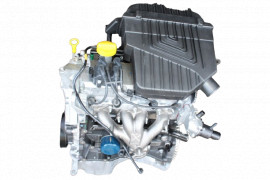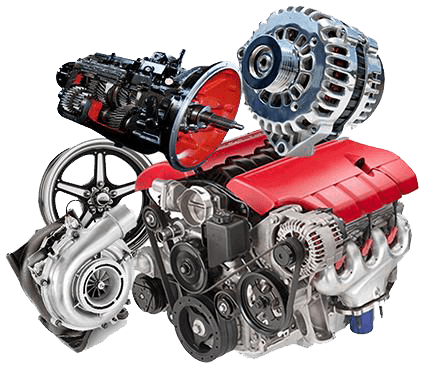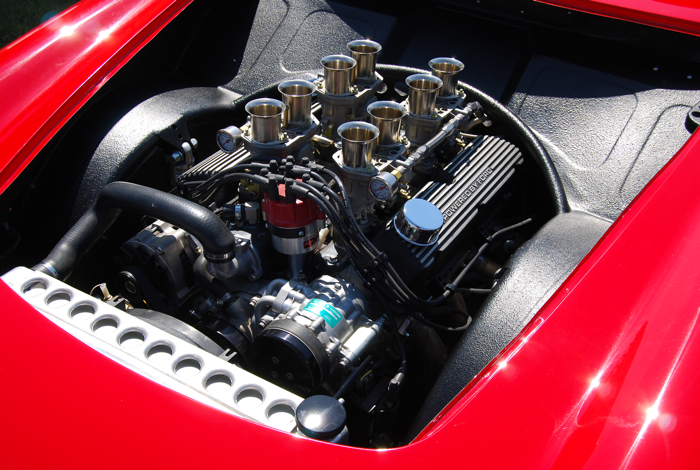Locating the very best Offers on Opel Corsa Engine Parts
Wiki Article
Checking Out the Inner Functions of a Compact Lorry's Engine System
As chauffeurs, we often consider given the detailed processes that take place within the confines of our car's engine system. The compact yet complex machinery that propels us forward is a wonder of design accuracy and coordination. From the regulated surges in the combustion chamber to the careful timing of gas shot, every element plays a critical function in the smooth operation of the engine. In this expedition of a portable lorry's engine system, we will certainly unwind the internal operations of this mechanical symphony, clarifying the secrets that drive us onward on our day-to-day journeys.Burning Process Summary
The burning procedure in a portable car's engine system is an essential mechanism that effectively transforms fuel into power to power the automobile. This process takes place within the combustion chamber of the engine, where gas and air mix, ignite, and produce regulated surges. The combustion procedure contains four major phases: consumption, exhaust, power, and compression.Throughout the intake phase, the piston moves downward, drawing in a mixture of air and gas right into the combustion chamber. The following stage, compression, entails the piston relocating upward, pressing the air-fuel mixture to boost its strength. Consequently, in the power stage, the trigger plug stirs up the compressed mix, causing a quick growth of gases that requires the piston back down. This descending motion produces the power needed to drive the lorry. Finally, in the exhaust phase, the burned gases are gotten rid of from the burning chamber via the exhaust shutoff, preparing the chamber for the next cycle. This cyclic burning process is basic to the operation of a small car's engine system, guaranteeing reliable energy conversion for propulsion.
Piston and Cyndrical Tube Interaction

The piston's accurate fit within the cyndrical tube is essential for preserving ideal compression and preventing power loss during combustion. Tight clearances in between the piston and cylinder walls make sure reliable securing, permitting the piston to move efficiently without permitting gases to leakage past. Proper lubrication is also important to minimize friction and use in between these components, improving long life and performance.
In addition, the design and materials made use of in making the piston and cylinder effect engine effectiveness and longevity. Modern engines usually employ light-weight yet long lasting products like light weight aluminum alloys for pistons and cylinder liners to lower inertia and enhance thermal effectiveness. In general, the unified communication in between the piston and cyndrical tube is fundamental to the engine's performance and total efficiency.
Fuel Shot System Capability
Gas shot systems in portable car engines play a crucial duty in specifically supplying fuel to the combustion chamber for effective and regulated ignition. The gas shot system works by injecting fuel right into the combustion chamber at the optimal moment throughout the engine's operation (opel corsa engine). This exact timing ensures that the fuel mixes evenly with the air for appropriate combustion, resulting in improved fuel efficiency and reduced exhaustsThere are mostly 2 kinds of fuel shot systems made use of in compact automobile engines: port fuel injection (PFI) and direct fuel shot (DFI) PFI systems inject fuel into the intake port prior to the consumption shutoff, while DFI systems infuse gas straight right into the burning chamber. Both continue reading this systems have their benefits, with DFI offering far better gas atomization and PFI giving an extra cost-effective solution.
Understanding Engine Cooling Systems
Efficient procedure of a compact vehicle's engine relies heavily on the effectiveness of its cooling systems. Engine cooling is important to prevent overheating, which can bring about serious damages and lowered efficiency. The air conditioning system in a portable automobile commonly consists of a number of components interacting to regulate the engine temperature level. One vital component is the radiator, which uses coolant to take in warm from the engine. As the hot coolant streams with the radiator, it releases warm right into the air, cooling down before returning to the engine. The water pump flows the coolant with the engine and radiator, making certain a constant flow to control temperature. In addition, the thermostat aids control the coolant circulation to keep ideal engine temperature level. Some automobiles likewise have cooling fans that trigger when added cooling is required, such as throughout rush hour or hot weather. Comprehending these engine air conditioning devices is vital for keeping the efficiency and durability of a small car's engine system.
Exhaust System Components Explained
The ideal performance of a small automobile's engine air conditioning systems depends on a corresponding system recognized as the exhaust system, which makes up numerous vital parts for making sure efficient emissions and engine performance. The exhaust system includes elements such as the exhaust manifold, catalytic converter, muffler, and tailpipe. The exhaust manifold gathers exhaust gases from the engine's paths and cyndrical tubes them to the catalytic converter. The catalytic converter then transforms dangerous toxins in the exhaust right into much less dangerous exhausts before releasing them via the muffler and tailpipe.One essential element of the exhaust system is the oxygen sensor, which checks the oxygen levels in the exhaust gases to assist regulate gas usage and ensure optimum engine efficiency. opel corsa engine. In addition, the resonator might exist in some exhaust systems to decrease sound levels. In general, the exhaust system plays an important duty in preserving engine performance, reducing hazardous exhausts, and making certain a quieter driving experience for small lorry proprietors

Final Thought
To conclude, the compact vehicle's engine system is an intricate combination of elements that interact to assist in the burning process, convert gas right into power, and eliminate waste gases. Recognizing the internal functions of the engine system, consisting of the piston and cylinder interaction, fuel injection system, engine air conditioning devices, and exhaust system components, is essential for keeping optimum efficiency and effectiveness of the car.The burning process in a compact car's engine system is a vital mechanism that efficiently converts gas right into power to power the car.Gas injection systems in portable useful reference automobile engines play an important function in specifically providing fuel to the combustion chamber for efficient and regulated ignition.There are mainly 2 types of gas shot systems utilized in portable vehicle engines: port gas shot (PFI) and straight gas injection (DFI) Recognizing these engine cooling systems is More hints important for keeping the performance and durability of a small vehicle's engine system.
The optimum performance of a small vehicle's engine cooling systems depends on a corresponding system recognized as the exhaust system, which comprises numerous crucial components for guaranteeing reliable discharges and engine performance.
Report this wiki page